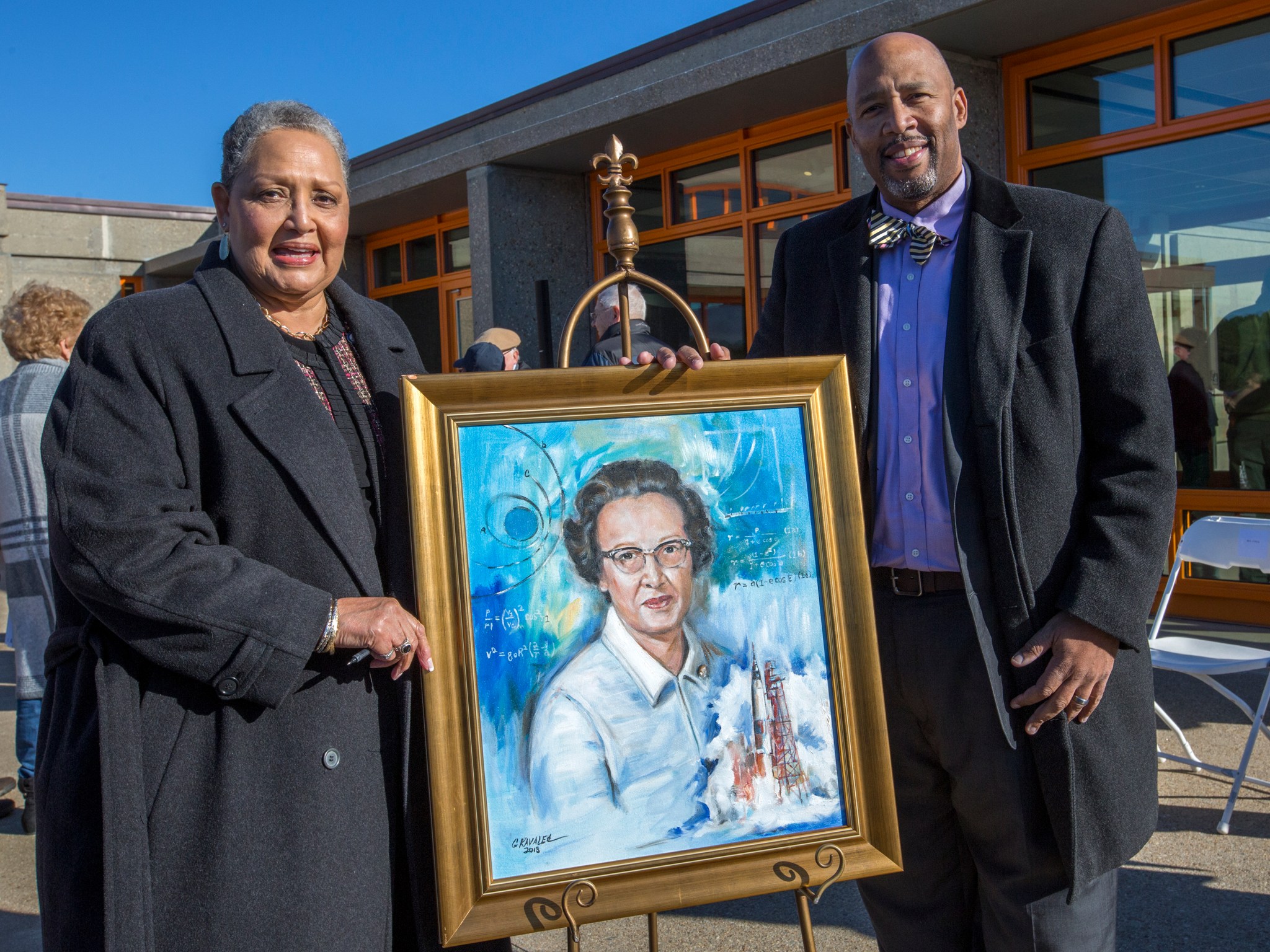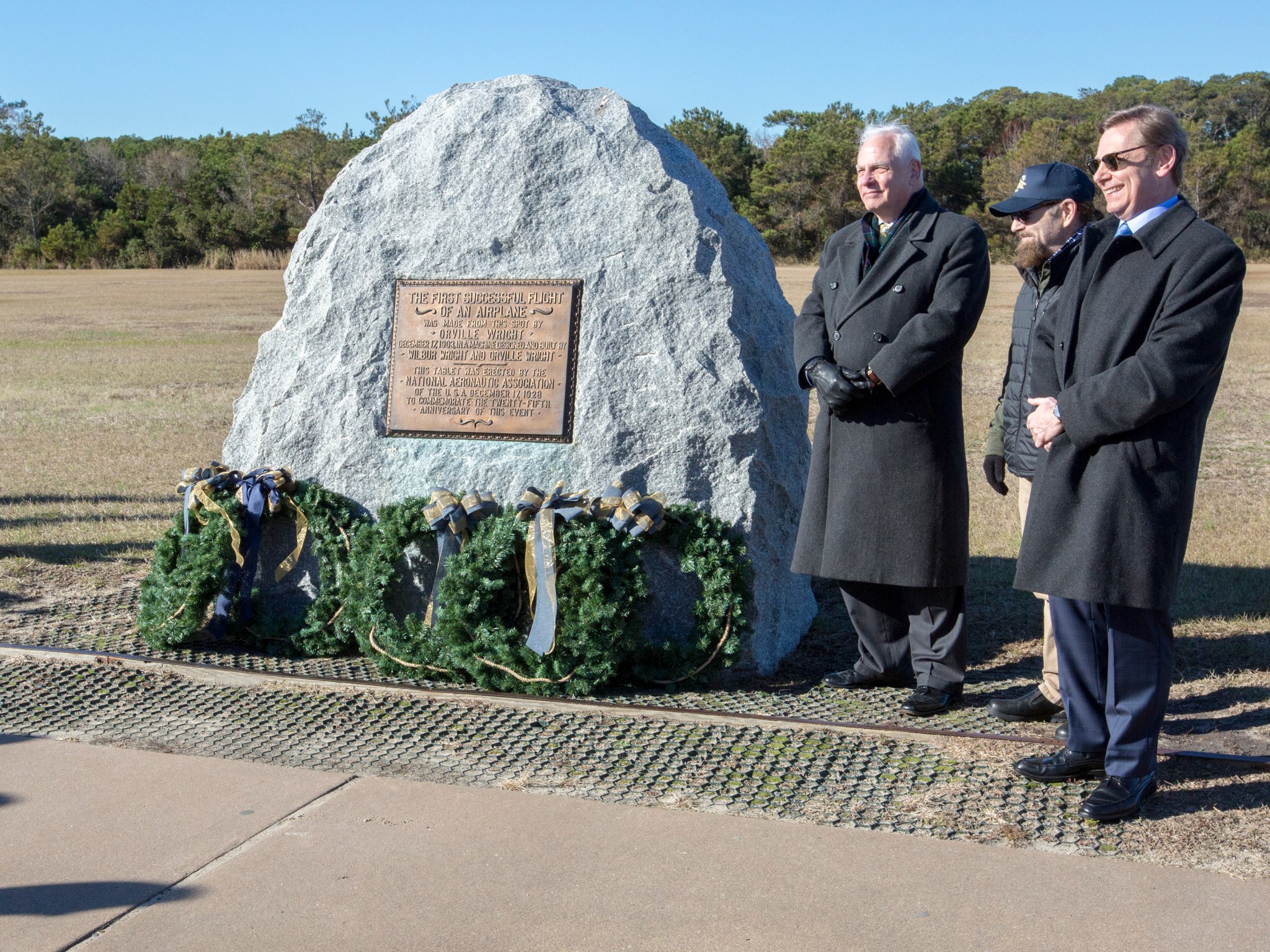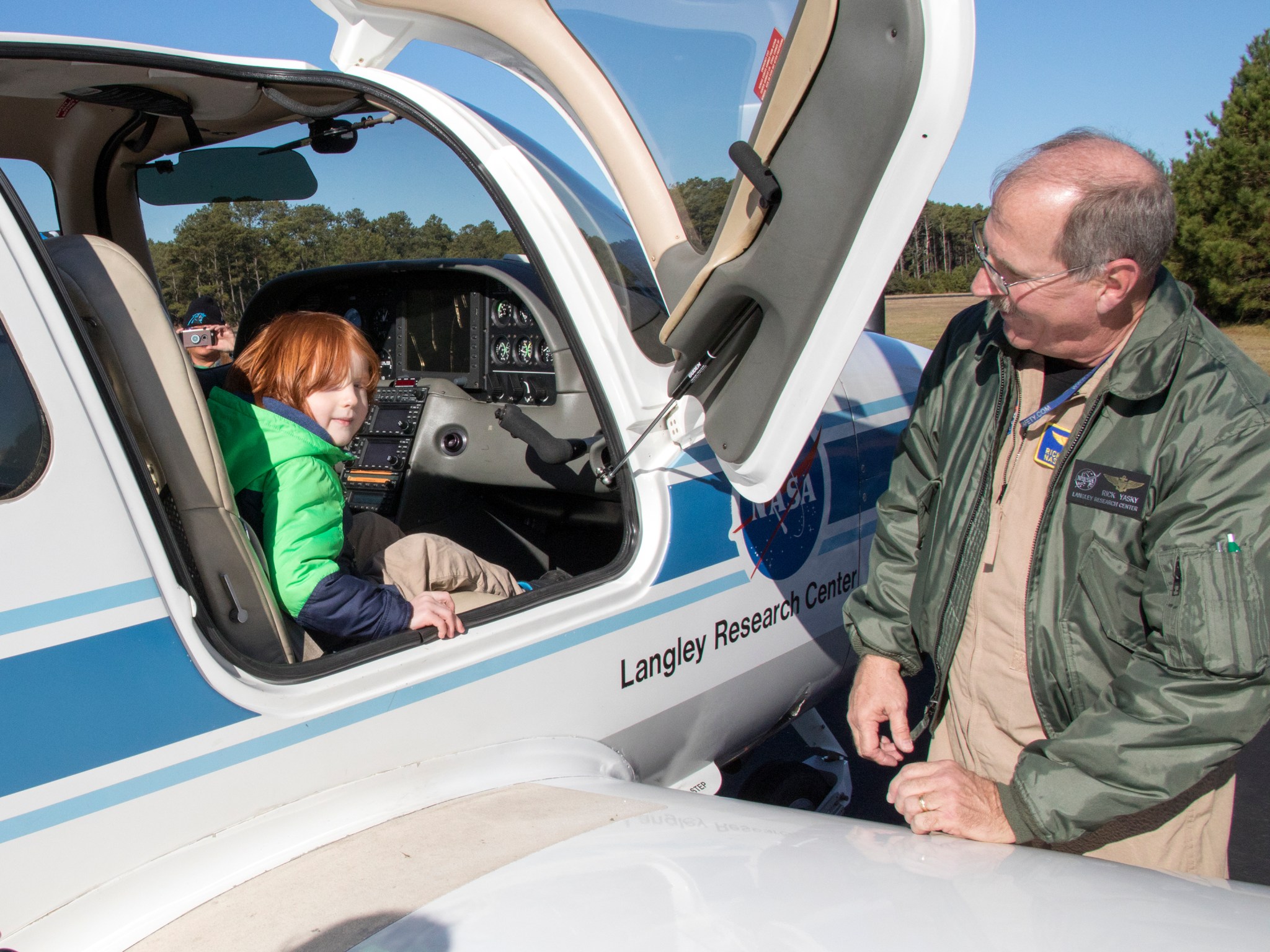Decades may separate the Wright Brothers and Katherine Johnson, but their contributions to aviation are forever linked. A group dedicated to the achievements of Orville and Wilber Wright recently recognized Johnson and placed her in its hall of fame.
The First Flight Society of Kitty Hawk, North Carolina, celebrated the legacy of Johnson, a retired mathematician and human computer from NASA’s Langley Research Center in Hampton, Virginia. She was inducted into the Paul E. Garber First Flight Society Shrine Dec. 17 at the Wright Brothers National Memorial. The event also marked the 115th anniversary of powered flight from the Wright Brothers.
The First Flight Society is the oldest organization honoring the Wright Brothers, in partnership with the National Park Service.
“Today is a celebration of the power that mathematics has had in improving our lives,” Paul Wright Jameson, great-grandnephew of Wilber Wright, on their contributions. “They used math to take us to the next stage,” he said, referring to both the Wright Brothers and Johnson.
Johnson’s daughter, Katherine Moore, and grandson, Michael Moore, were on hand to participate in the unveiling of her First Flight Shrine portrait painted by artist Gregory Kavalec.
“Katherine Johnson, a human computer and once-called ‘hidden figure,’ provided a key part of the deep thinking and relentless effort that NASA needed to begin our reach toward the stars,” said Langley Director David Bowles. “I’m thrilled that the First Flight Society has decided to honor her in this way.”
The Wrights Brothers’ achievements helped make spaceflight possible as their efforts on the sandy dunes of Kitty Hawk birthed a century of progress for humans, said Tom Crouch, senior curator of the Smithsonian National Air and Space Museum’s Aeronautics Department.
“The age when humans began to turn a corner began right here 115 years ago,” he said.
Crouch said the Wright Brothers, despite being high school dropouts, were in fact intuitive engineers and mathematicians of genius.
“They would be especially pleased that mathematician Katherine Johnson is being honored on First Flight Day,” he said.
After doing her part in NASA’s groundbreaking space missions, Johnson contributed to aspects of the space shuttle and the Earth resources satellite program.
Early in her career at Langley, Johnson did aeronautics work, calculating data for studies of wake-vortex accidents and aircraft flight tests. By the late 1970s, she was doing aeronautics work again — providing math and computer programming support for research related to design of aircraft control systems.
“The mathematics mastered by Katherine Johnson was on a whole new level,” Jameson said.
Through her skill, courage, and personal integrity, Johnson set a standard we all should emulate, Bowles said.
“At Langley, we are proud that Katherine’s story has traveled so far and been embraced by so many,” he said. “And inside our gates, we’re always glad to highlight her contributions.”
Johnson joins fellow Langley alumnus Richard T. Whitcomb, who conceived and developed three revolutionary aerodynamic concepts that forever changed airplane design by enabling military and civil aircraft to fly faster, farther, and with less fuel, in the First Flight Society’s shrine.
At the conclusion of the program, three planes from Langley’s Research Services Directorate participated in a flyover near the ceremony – the Cirrus SR-22, the Cessna Columbia 300 and the HU-25 Guardian. NASA uses these aircraft to support a variety of important missions, from global data collection in support of different Earth Science missions, to serving as technology testbeds to advance the future of human flight.
The SR-22 is an unmanned aircraft systems (UAS) technology testbed that can be flown remotely from the ground. It is testing technologies to help safely integrate unmanned aircraft into the national airspace. The airplane parked at nearby First Flight Field and was made available to view from ceremony attendees, where chief pilot Rick Yasky and electronics/integration engineer Kevin Shelton answered questions.
- To view a photo gallery of the event, click here.
Eric Gillard
NASA Langley Research Center




























